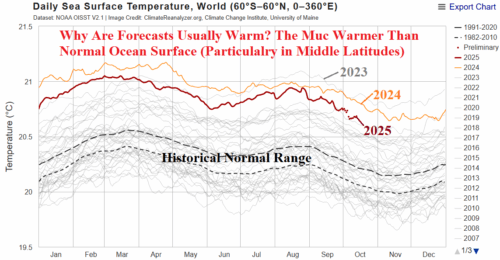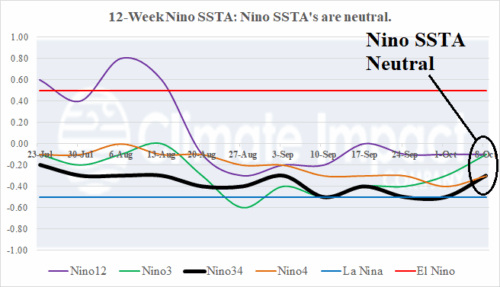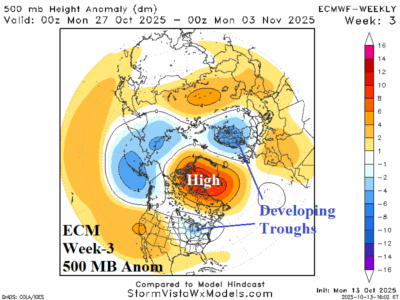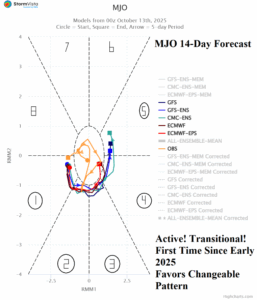10/15/2025, 7:01 am EDT
Day-to-day, medium/extended-range forecasts in North America are usually warmer than normal. A leading catalyst to that regime is much warmer than normal global ocean surface, most apparent in the middle latitudes beneath the prevailing upper-level westerlies that drive out climate. Maine heatwaves have increased dramatically in the middle latitudes particularly in recent years.




